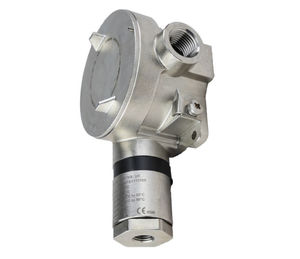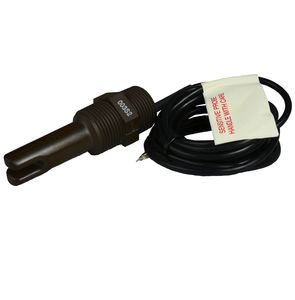
Level sensor DSGE seriesfor shipsfor tankshydrostatic
Add to favorites
Compare this product
Characteristics
- Measured value
- level
- Application domain
- for ships
- Applications
- for tanks
- Other characteristics
- hydrostatic
Description
The DSGE-25/16 Hydrostatic Level Probes are designed to measure liquid levels in tanks, deep wells or narrow piezometers. The probe measures liquid levels, based on a simple relationship between the height of the liquid column and the resulting hydrostatic pressure. The pressure measurement is carried out on the level of the separating diaphragm of the immersed probe and is related to atmospheric pressure through a capillary in the cable.
When lowered to the reference level, the probe may either hang freely on the cable or lie on the bottom of the tank. The cable with the capillary can be extended using a standard signal cable. For the cable connection a special DSG cable hanger is recommended.
Key Features
4–20 mA output signal proportional to level
Flush mounted ceramic sensor
Good long term stability
Ideal for industrial or marine applications
Wide range of mounting options
Low cost installation
Readouts for control room or plant mounting
FEATURES & BENEFITS
Cost-Effective
The D-Series offers customers a high specification and comprehensive product range at very competitive prices
Versatility
The D-Series of level probes offers solution suitable for various application and varying well sizes.
Accuracy
The D-series hydrostatic level probes have an excellent repeatability 0.05% and global accuracy 0.3%. Higher accuracy and digital SMART Hart version available.
Catalogs
No catalogs are available for this product.
See all of Delta -Mobrey‘s catalogsRelated Searches
*Prices are pre-tax. They exclude delivery charges and customs duties and do not include additional charges for installation or activation options. Prices are indicative only and may vary by country, with changes to the cost of raw materials and exchange rates.









